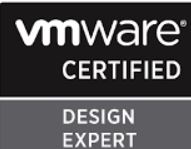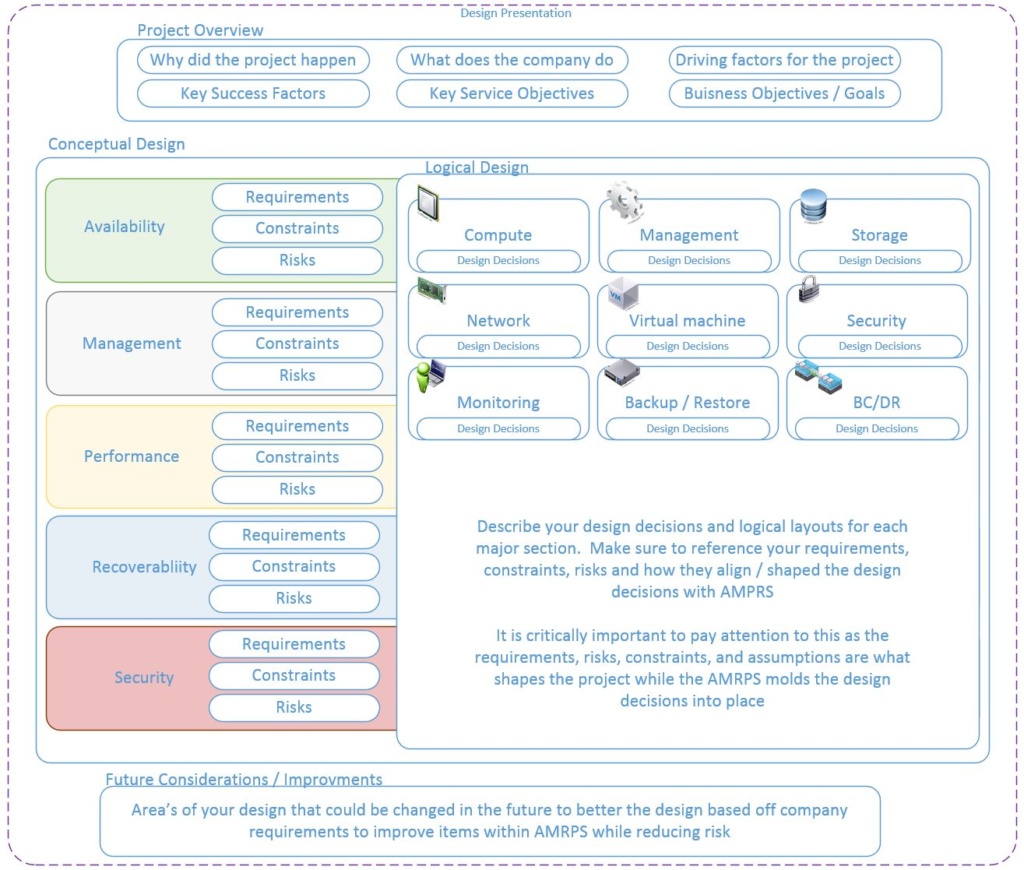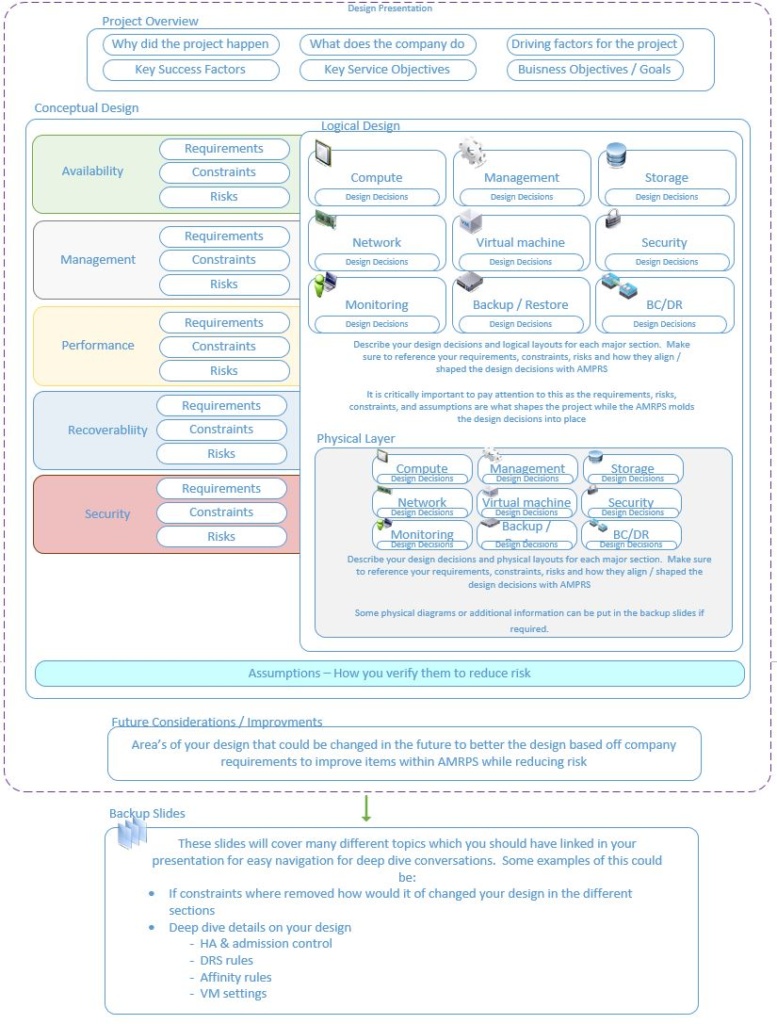
So after hours of working on your design, submission, and with some patient waiting you finally get that email from VMware stating your design has been accepted for defense! Quickly you go into over drive and start ferociously working on your defense presentation. Now maybe you already started working on your design presentation, maybe you haven’t but I find the questions typically always have a trend of similarity with the biggest one being:
HOW do I take a 100-500 page VMware design and cram it into 20-30 presentation slides and get the message across in 75min?
So first off why 20-30 slides? Well taking the 75min you have to defend and dividing that by 20 will leave you roughly 3.75min per slide to get your point across and answer questions. So I figure that is probably a good starting point. Now everyone has their own approach and every VCDX I’ve either chatted with, mocked with, or just had general discussions with all have their own unique way of tackling the defense. So with that said take any advice given here as just that, “just advice” and feel free to mold it any way you see fit to help assist you in your VCDX defense, as there is no one shoe fits all in the defense.
Now there is some things the VCDX panel will be looking for so lets take a look at those things and figure out how you can take your 100-500 page design and trim it down into a concise 75min story for the defense panel
Lets take a look at a few of these

The best way I can describe what you want to do is pretend you have created a design for a company and your presenting it that company. In the room is people from the organization is C-Level (CEO, CFO, CTO, ETC), Managers, and technical staff. You want to start by talking about the business requirements around the project. Why did the project happen? What does the company do? How does the company make money? Driving factors for the project, key success factors, key service objectives, and business Objectives / Goals. This helps set the story and align the scope of the project or Key success factors. Without clear key success factors its hard to define if or when the project was successful which can lead to scope creep which is a topic for another time.
After that there is much discussion on how to lay out your slide deck but one thing is consistent. You want to show how the companies Requirements, Constraints, Risks, and Assumptions shaped your design/design decisions. All while adhering to AMPRS while working your way through the conceptual, logical, and physical designs on key topics like Compute, Management, Storage, etc. Above is a conceptual or visual layout of what your trying to achieve.
Now the above diagram has physical left out as I couldn’t fit it all in 1 Visio page and there is some discussion around the physical layer. What I mean by this is some sections in the design have less physical layouts like the virtual machine design opposed to say Compute or Storage. So there is some discussion among VCDX mentors on how to tackle this. Some put as much as possible of the physical in, while others put some of it in their backup slides to save on time and use it if required or save those opportunities to show off some white boarding skills. Personally if there is a strong design decision on the physical side as to why you did something or went a particular direction to solve a requirement its worth showing. With that in mind lets take a look at the whole picture now

The backup slides are typically at the end of your presentation and hidden. They are there to be linked to or jumped to in the event you want to deep dive on a topic or want to go over some additional information. Also keep in mind that white boarding stuff and showing your thought process while presenting is also important , so if you get an opportunity to do it get up there and use that white board.
Outside of that make sure you mock as much as possible leading up to your defense. Every time you mock you will get better at it and your presentation slide deck will improve. However keep in mind no matter how good you get at your presetnation there will always be room for improvement
I hope this helps, and as always any feed back is always appreciated, or if you have any questions please let me know,
All the best luck to this quarters VCDX candidates!


Osm presentation guys